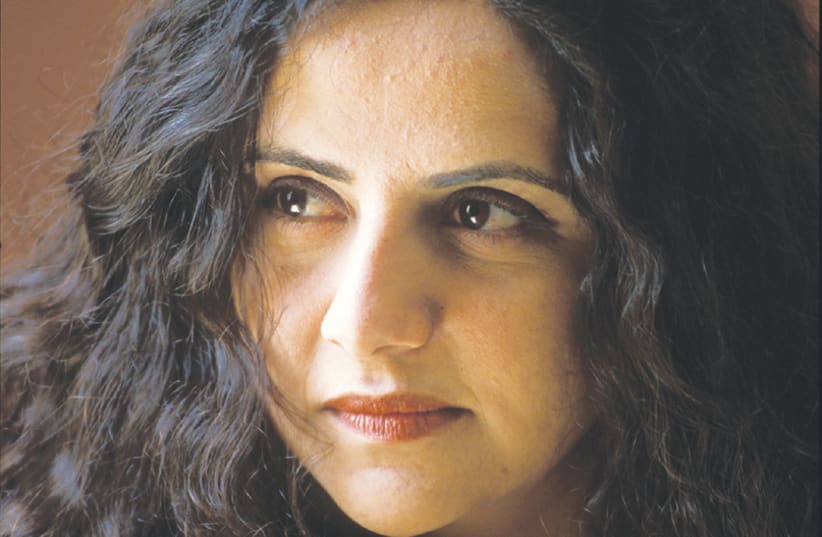As life becomes ever more online-oriented, and with seemingly infinite volumes of knowledge available at the click of a mouse button, one wonders whether there’s anything “out there” still to be found. But, once in a while, some gems from the recesses of time surface, sometimes as the result of a serendipitous discovery, other times after a long hard dedicated slog.
You could say that Hadas Pal-Yarden’s contribution to this year’s online International Oud Festival (November 19-28) is the upshot of a bit of both. On November 22 (7 p.m.), the Jerusalemite singer and ethnomusicologist will present an enticing program of Ladino songs that lay buried deep in the bowels of the EMI archives in London for more than a century. The material she will perform comes from a veritable treasure trove unearthed from the repository of the EMI record company in the UK, spanning music recorded in Salonika and Sarajevo prior to World War I performed by the cream of Jewish Sephardi male and female singers of the day.
After making it to the light of contemporary day, the recordings were acquired by the Jewish Music Research Center of the Hebrew University of Jerusalem and unveiled earlier this year after undergoing a protracted and intricate process of cleaning and digitizing. Pal-Yarden will proffer some choice pickings from the precious find, based on fresh arrangements, in her “Hidden Voices” slot at perennial festival venue Confederation House in Jerusalem, backed by baglama player Yaniv Ovadia, quarter tone guitar, oud and saz player Eliyahu Digmi, clarinetist Amitai Mann and percussionist Yoni Sharon. Israel Prize laureate musicologist Prof. Edwin Seroussi, who got Pal-Yarden on board the project at hand, will provide some enlightening commentary about the backdrop to the music.
“Hidden Voices” has been a slow burner, and not just because of the protracted period of latency in the UK. It was Seroussi and ethnomusicologist Rivka Havessy, with whom Pal-Yarden studied at Bar-Ilan University, who undertook the painstaking research work into the whys and wherefores behind the source material. Their efforts proffered some fascinating fruits, and immersive insight into the evolution of Ladino music and material with a range of cultural baggage in the early years of the 20th century.
“What is so compelling about this collection, is that you find, for example, a Jewish Turkish singer who also made recordings in Turkish,” Pal-Yarden explains. “And there were recordings in Greek.” None of that make their way into the Oud Festival concert agenda, but helps to shed some light on the musical and cultural zeitgeist of the time.
There was, it seems, a sense of urgency about preserving musical and cultural legacies. “That, for me, is fascinating,” Pal-Yarden continues. “What was there about the cultural scene of the day that made artists, and even amateurs, so keen to record practically everything they knew? They didn’t relate to themselves just as ladino singers. They saw themselves as singers, in the wider sense.”It is not that the absence of the “professional” epithet, either of the performers or technological infrastructures, spawned inferior end results. “These recordings are very authentic,” Pal-Yarden notes. “And they used authentic instruments, like oud, qanoun, def and such like. The recordings are very amateur but some of the melodies I listened to are so complex and challenging. What an amazing treasure I came across!”The singer’s enthusiasm for the Oud Festival excursion was also fired by the very fact that the works have been kept alive for so long, by dint of those avid yesteryear musicians who must have had some grasp of the importance of preserving the music for future generations. “Some of the songs are among the great highlights of ladino music today,” she says. And some of the most emotive. “There is a song from Salonika in the collection, called Arvoles, that was sung by Jews on their way to the concentration camp furnaces.”The Internet-facilitated audience on Sunday may recognize some of the numbers, including songs made famous by the likes of Yehoram Gaon. “There are some very well-known songs in the collection, but there are also songs which are hardly known at all, and have a heavy Turkish style which I like very much.” says Pal-Yarden. Part of the fuel driving this project is the singer’s desire to revive material that is in danger of becoming extinct. “Yes, I do have a sense of mission, in bringing these songs to the attention of the world.”The concert should be an entertaining and informative experience for viewers. “I balanced the repertoire with songs which many people will recognize, and others which, if we don’t perform them and record them, they will simply cease to exist.” One extremely rare work, “Kol Beruei Maalah” (All Celestial Creations), written by 11th century Spanish poet and philosopher Rabbi Shlomo Ibn Gvirol was certainly on the danger list. “I was taught the song by someone in Turkey who told me, at the time, that only four people knew it,” Pal-Yarden notes. “Now thousands know it. I have taught it at workshops I have done in Jewish communities all over the world.”If anyone is qualified to do the resuscitation business it is Pal-Yarden. She spent six years in Istanbul studying Jewish Turkish music, and spreading her musical wings into a wide range of stylistic climes, including Ottoman music, folk material and ballads, and Judeo-Spanish liturgical works. She has three albums to her name and has more than a decent handle on the ladino dialects that emanated out of Jerusalem over the years.
“Kol Beruei Maalah” should make it into the Confederation House show and, possibly, an intriguing version of our national anthem. “Sarajevo Jews wrote words for “Hatikvah” in Ladino, and they sang it like a march, very rhythmic and joyful.” Now there’s a turn up for the Jewish historical books.
For tickets and more information: http://tickets.bimot.co.il and www.confederationhouse.org.il
